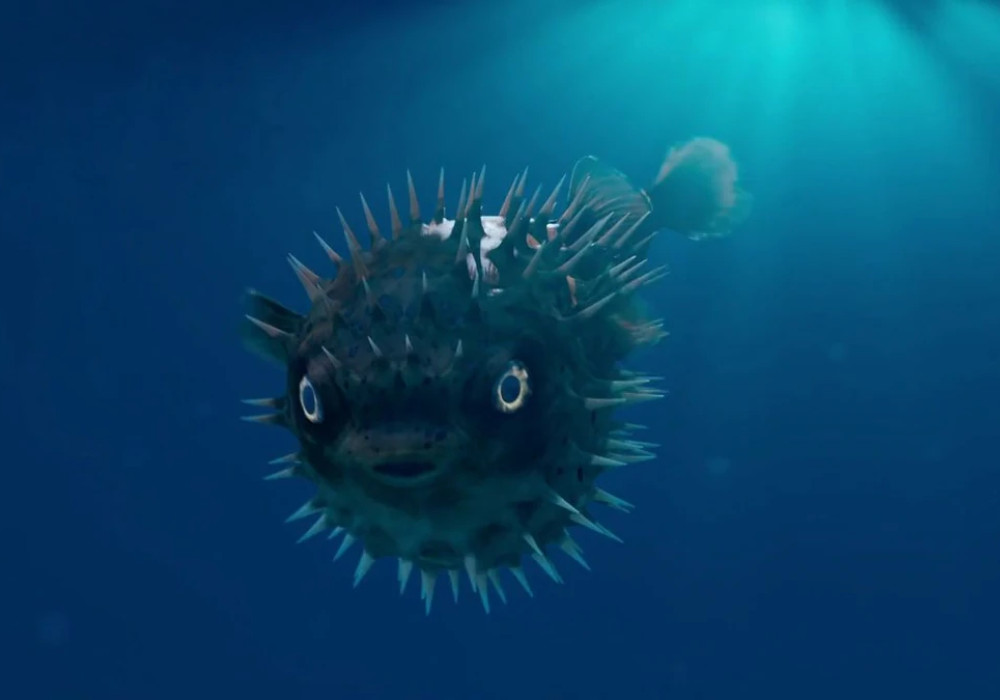When most people think of puffer fish, they envision a swollen fish with 360-degree quills. But if you look past the spikes, you’ll discover a fish with an interesting backstory. If you’re thinking about introducing a puffer fish to your aquarium or just want to learn more about these fish, here are ten facts about them:
Species Abound!
There are more than 120 different species of puffer fish, said Kristin Claricoates, DVM at Chicago Exotics Animal Hospital. The majority of them are marine-water fishes (read: require a saltwater aquarium). However, she said that there are 40 types of puffer fish found in brackish waters (a mix of salt and fresh water), and 29 species are found in freshwater. Pufferfish can vary from two inches to up to several feet in length.
Puffer Fish is a Delicacy…
Did you know that most puffer fish, when eaten, are toxic to predators—and even humans? According to Claricoates, despite this risk, countries such as Korea, China, and Japan consider puffer fish a culinary delicacy and only specially-trained chefs know how to serve them safely.

That can be Deadly
The puffer fish’s toxin, tetrodotoxin, is located throughout its body and is produced by bacteria, according to Dr. Nick Saint-Erne, Certified Aquatic Veterinarian at PetSmart. Puffers that had been raised in a bacteria-free environment did not generate the toxin in that case. The chefs who prepare Fugu, or puffer fish fillets, were not interested in serving a fish that did not contain the toxin because the numbing effect of the toxin when the fish is consumed is the appeal of eating puffer fish, he said. Even when properly prepared by a trained chef, about a half dozen diners perish each year from the paralyzing effects of puffer fish, so they should not be deemed food in general.
Puffer Fish is a Multi-Threat Fish
Despite using their fins to help them swim (with a tail fin acting as a rudder), puffer fish are notoriously slow-moving. However, they do have other methods for deterring—or defeating—predators out to get them, said Claricoates, including:
- Excellent eyesight, which is helpful in scouting food or detecting predators early.
- A burst of energy that they can muster to swim quickly away from predators (albeit in a poorly controlled direction).
- If they are unable to get away, they enact the process they are known for: they gulp in a large amount of water (or if out of the water, air) to make themselves large and unappealing, she said. This puffing, in addition to their spines and quills, makes them tough for a predator to swallow (and may get stuck in a throat).
Even if a predator successfully eats a puffer fish, it may die from the toxin in the puffer fish’s body.

Spines vs. Scales
Puffer fish do not have scales, but instead have spines (which you may not be able to get a good look at until they puff up), said Claricoates. Because puffer fish don’t have scales, they are very sensitive to water variations and tend to be more at risk for diseases.
Puffer Fish Require an Experienced Owner
“Puffer fish are not the ideal fish for a new fish owner,” said Claricoates, “nor should they be an impulse purchase.” These fish require top water quality, lots of space, and a good diet. Additionally, if you have dreams of a fish tank filled with all species, these aren’t your fish. Pufferfish aren’t community fish and must be kept alone, as they are carnivorous.
“They will either eat the other fish that are small enough, or they will bite at the other fish’s fins if they are too big to eat,” she said. “If, however, the puffer fish is very small, they will likely starve because they’re too small to compete with better and faster swimmers in the tank. A puffer fish, if kept in an ideal environment, can live up to ten years.”

They are What They Eat
In the wild, puffer fish are predators, and eat a variety of snails, shellfish, crustaceans, and other fish, said Claricoates. In captivity, puffers will eat almost anything, so a variety of foods should be offered to allow for a healthy mix, she said.
Claricoates recommends a diet consisting of foods with shells, including blue crab, mussels, clams, shrimp, live snails, and bloodworms. “At home, finding something that is human-grade food quality is important to keep your puffer fish healthy,” she said. “Live food is good for the enrichment and preferable, but freshly-killed or frozen food will work as well as long as it is human-grade fresh.”
She also advised that when or if you are offering live food, it must be quarantined (in a separate aquarium) for a month prior to feeding it to your puffer fish. This ensures the food is healthy and prevents puffer illness from unhealthy food.
A Puffer Fish’s Teeth Never Stop Growing
Many fish species have teeth that stop growing at some point, but puffer fish do not. Because they eat hard foods, they have teeth (also called beaks) that continuously grow throughout their lives, said Claricoates. This makes it paramount to offer your puffer fish food with hard shells to help organically trim their teeth. Without snails or the like, your puffer fish may require veterinary dental attention.
“Otherwise, [a puffer fish’s teeth] can grow too long and result in the inability to eat, and even starvation,” she said.

High-Quality H20 Required
How much you feed your puffer fish—and what is left over—will cause elevations of the nitrates and nitrites in your tank. Additionally, puffer fish are very messy eaters. Both of these issues can cause a lot of ammonia to be released into the tank, said Claricoates, which places a higher demand on your tank’s filtration system.
Saint-Erne recommends changing 10 to 25 percent of the water in new aquariums each week, using dechlorinated water, then a 25 percent water change every two-to-four weeks after the aquarium nitrogen cycle has been established and there is no more ammonia detected in the water.
Remember, while many puffers are saltwater fish, there are a few species available in fish stores that are freshwater, and it will be important to determine which species your fish is as you set up your tank.
You’ll Need to Super-Size Your Tank Space
When it comes to tank size, puffer fish require a significant step up from that of a goldfish. The tank size for a small puffer fish should be 20 to 30 gallons, said Claricoates, and a large puffer fish can require a tank up to 100 gallons or more in size.











